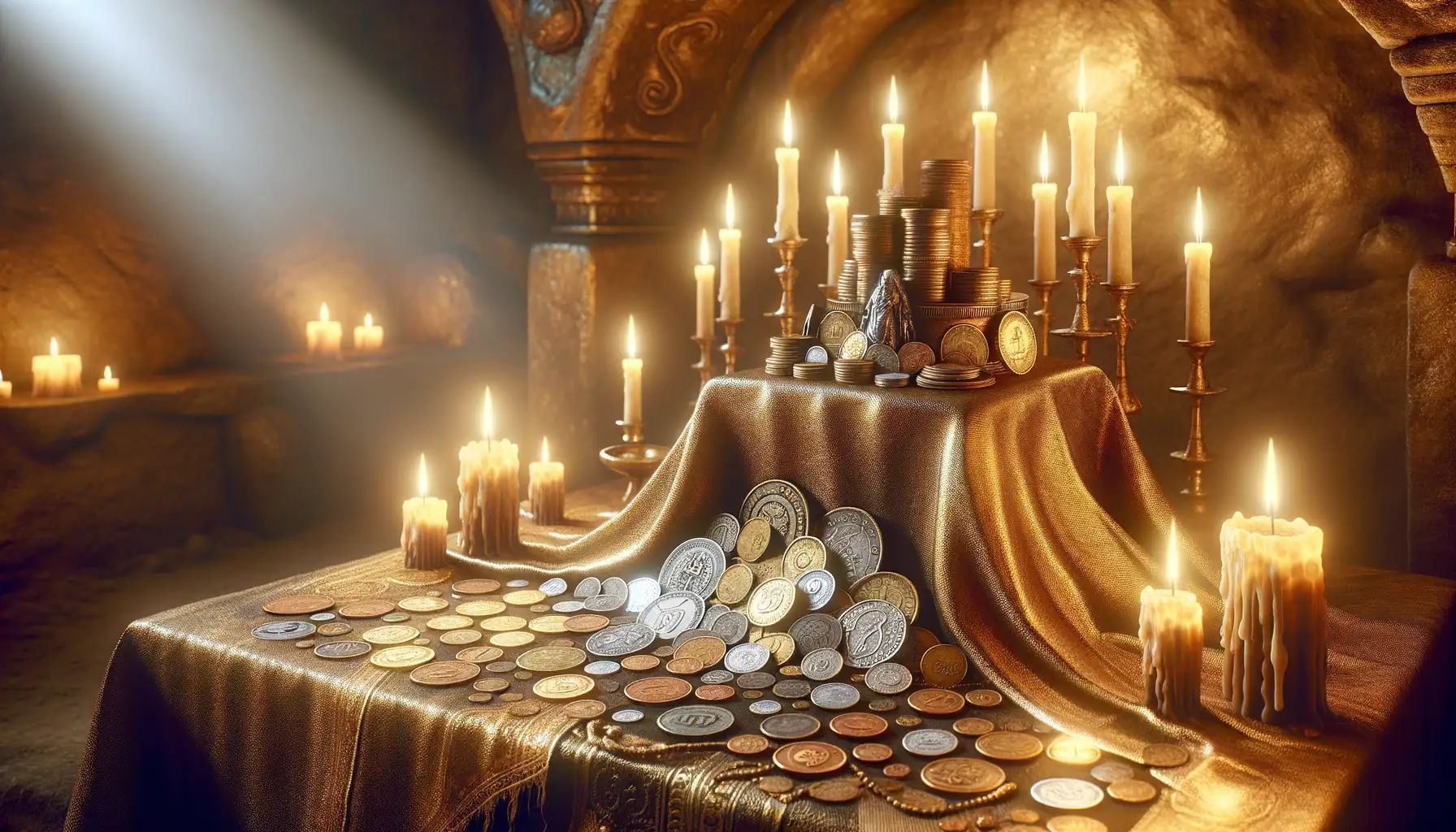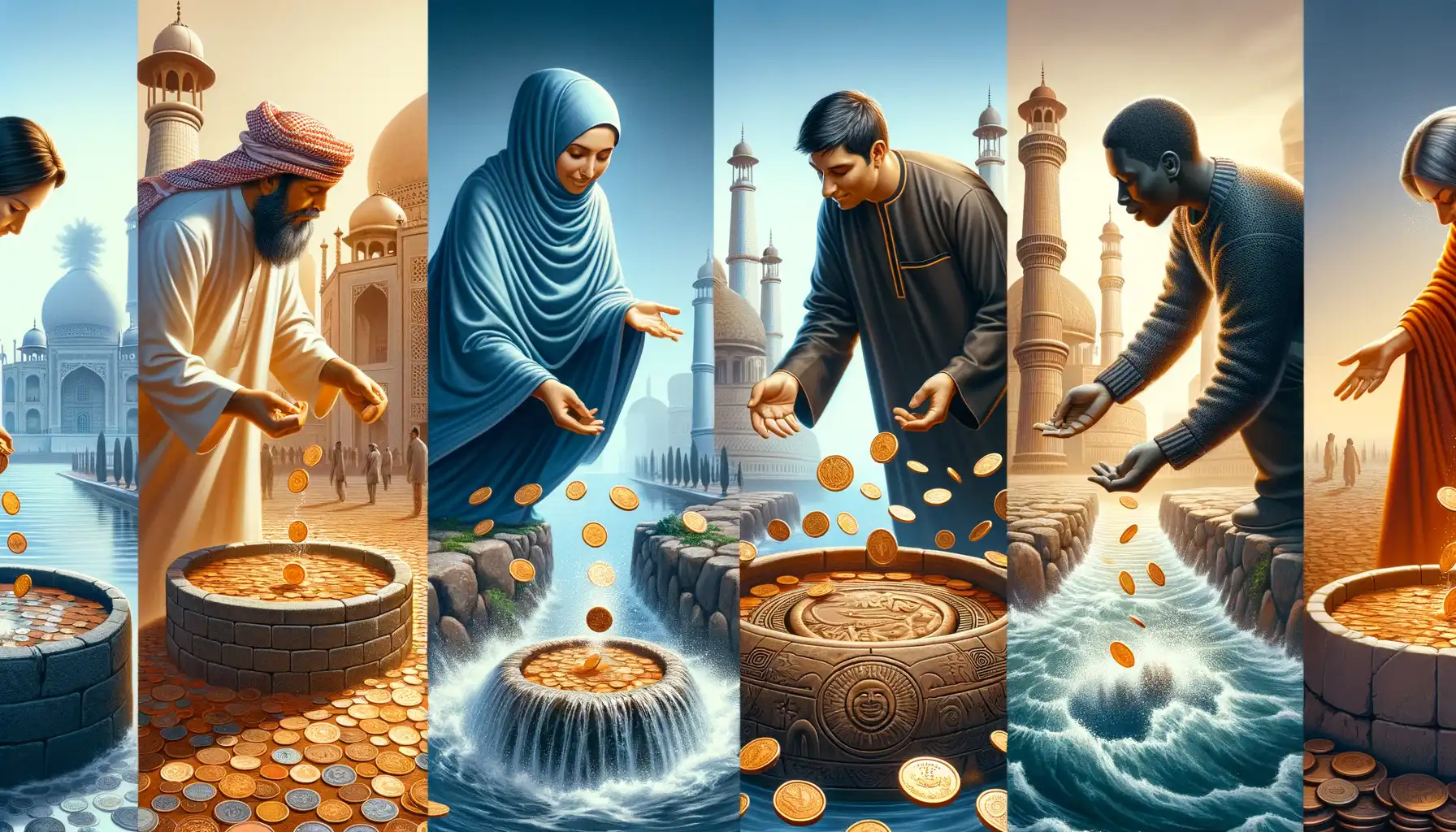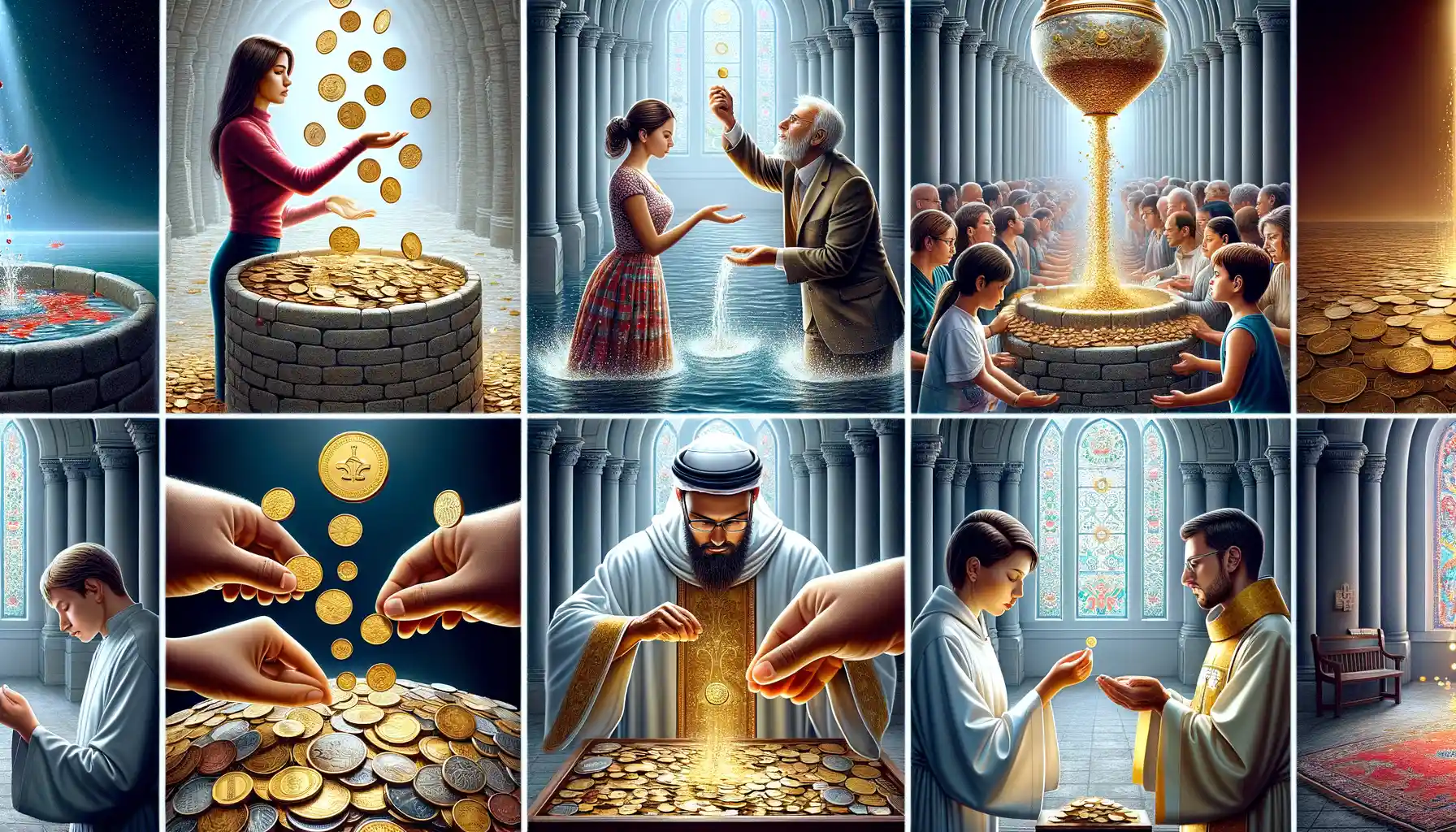Historical Context of Coins in Religious Practices
Ancient Beginnings of Coins in Worship
Imagine walking into a temple thousands of years ago, the air thick with incense and whispered prayers. A glimmer catches your eye—a small, carefully placed coin resting at the foot of a sacred statue. This wasn’t just currency; it was a bridge between the mortal and the divine. From the golden drachmas of ancient Greece to bronze Chinese cash coins engraved with symbols of harmony, these pieces of metal carried weight beyond their material value.
In early societies, coins were more than shiny objects—they were offerings, expressing devotion or asking for protection. Think of them as the ancestors of modern intentions scratched onto candles or written in journals. Each coin carried a story, a plea, or sometimes even gratitude. Ancient Romans, for example, would toss coins into fountains, not for good luck, but as a sign of allegiance to water deities like Neptune.
Behind every coin lies the echo of someone’s faith, encapsulated in metallic form.
Coins as Spiritual Portals
Across continents and centuries, coins became conduits for spiritual energy. Temples in India still collect millions of rupees annually from devotees who believe their offerings carry prayers directly to gods like Vishnu or Lakshmi. Similarly, medieval European churches often had special alms boxes where coins symbolized charity and humility.
The fascinating part? Coins weren’t only given to deities. Sometimes they were left for ancestors, buried with the dead to pay their way into the afterlife—think Charon’s obol in Greek mythology. This practice shows how coins have always straddled realms: life and death, human and divine, hope and fear.
Even today, in Japan’s Shinto shrines, visitors toss five-yen coins (considered lucky because of their phonetic similarity to “fate” or “connection”) into offering boxes. These coins create ripples—not just in the offering box—but across time, echoing age-old traditions wrapped in silent reverence. What humble power a single coin holds!
Symbolism of Coins in Spiritual Offerings

Coins as Messengers of Intention
Have you ever paused to wonder why coins, small and seemingly ordinary, appear time and again in spiritual offerings? These modest objects carry extraordinary weight—not just in metal but in meaning. A coin in an offering isn’t just currency; it’s a messenger of intention. When placed on an altar, tossed into a fountain, or buried in sacred soil, it whispers unspoken prayers, gratitude, or hopes.
Think about this: the circle of a coin can symbolize eternity, the cycle of life, or wholeness. Its metallic sheen reflects light, metaphorically channeling your desires toward the divine. It’s not just something you *give away*—it’s a fragment of energy you send forward, imbued with your personal story.
- A single coin might signify simplicity and humility.
- A pile of coins could represent abundance, prosperity, or a deeper investment in faith.
Every scratch or gleam speaks volumes. In many ways, these tiny discs are like keys, unlocking a spiritual connection between giver and receiver—a tangible way to say, “I’m here, I believe.” Isn’t that powerful?
The Hidden Language of Metals
Let’s talk about the material itself. Did you know that metals such as gold and silver have their own symbolic resonance? Gold, with its rich glow, often represents purity and divinity, while silver is thought to reflect clarity, intuition, and the moon’s mystique. Imagine offering a shiny silver coin—it’s akin to delivering a spark of inspiration to the universe.
Even copper, the humblest of metals, carries deep meaning. It’s associated with protection, grounding, and healing energy. So, whether you’re offering an ancient bronze drachma or a modern penny, the metal matters. It’s like embedding a secret code within your spiritual gesture.
Coins, then, are more than spare change—they’re artifacts of belief, polished by countless hands and steeped in centuries of sacred intent.
Cultural Variations in Coin Rituals Across the World

Enchanting Coin Traditions from East to West
What do a wishing well in Italy, a Shinto shrine in Japan, and a roadside altar in Mexico have in common? The mystical allure of coins! Around the globe, humans have poured their hopes, gratitude, and prayers into the humble coin, transforming it into a powerful symbol.
In Japan, at the iconic Meiji Shrine, visitors toss a single 5-yen coin—its hole in the center symbolizing the connection between payer and deity—while clapping hands twice to signal their prayer. Contrast that with the fountains of Rome, where travelers hurl coins over their shoulders into the waters of the Trevi Fountain, promising themselves a return to the Eternal City. They say nearly €1.5 million annually emerges from beneath those shimmering ripples.
Or take the vibrant Day of the Dead altars in Mexico, where coins are lovingly placed alongside marigolds, candles, and sugar skulls to guide spirits back to the land of the living. It’s not just ritual—it’s art, belief, and emotion all rolled into one.
- In Russia, coins are “buried” in foundations of new homes for prosperity.
- In Bali, Indonesia, coins are often tucked into ceremonial offerings made of palm leaves and flowers.
The world has found countless ways to mold metal into meaning, hasn’t it?
Modern Adaptations of Coin Usage in Religious Ceremonies

The Digital Wave: Coins Beyond the Offering Plate
Have you noticed how even the most tradition-bound practices find ways to evolve? Religious ceremonies, too, have embraced a modern twist when it comes to coins. Today, physical coins are no longer the sole players in offerings and rituals—sometimes, they’re not even invited to the party! Take, for instance, the growing trend of using **digital currencies** as a form of spiritual giving. Yes, you heard right—your crypto wallet is now your modern-day alms bowl.
In some temples, churches, and mosques, worshippers can now contribute through QR codes displayed on altars. Think of it as a silent prayer written in Bitcoin or Ethereum. It’s fascinating, isn’t it? A centuries-old symbolic act merging with technology in such seamless harmony.
Unique Modern Rituals Keeping Coins Alive
But fear not—physical coins aren’t retiring just yet. In many places, they’ve taken on roles as creative as they are sacred:
- Wedding Blessings: Couples place coins under their feet during vows, symbolizing wealth and stability in their union.
- “Lucky Coin” Games: Churches often incorporate coin-toss traditions at festivals, blending charity with fun.
See how tradition reshapes itself without losing its soul? Coins, whether physical or digital, still speak the universal language of devotion.
The Socioeconomic Impact of Coin Offerings in Faith Communities

When Coins Become Seeds for Change
Picture this: a humble coin slipping into the donation plate at Sunday service, or a small handful of currency pressed into a monk’s begging bowl. It may seem like a simple act of giving, but its ripple effects can transform entire communities. In many faith-based settings, coin offerings go far beyond spiritual symbolism—they become a lifeline.
Take, for example, a local church struggling to support families in need. Those tiny pieces of metal add up, funding food banks, shelters, and even scholarships for underprivileged youth. They’re not just coins; they’re seeds of hope planted in fertile ground.
The socioeconomic impact is profound. Faith communities use these offerings to:
- Build schools, hospitals, and clean water systems.
- Offer microloans to marginalized groups, empowering them to start businesses.
- Provide disaster relief faster than formal institutions can mobilize.
The beauty lies in how these coins multiply their value. A single offering can inspire generosity across an entire community, unlocking resources that uplift everyone.
Breaking Down Barriers with Financial Solidarity
What’s extraordinary is how coin offerings bridge divides—not just economic ones, but social and cultural as well. In interfaith gatherings or multi-religious regions, shared practices of giving bring people together in ways words can’t.
Think about how temples in India unite diverse caste groups through Hundi donations, or how mosques’ zakat boxes serve as safety nets for countless families. Coins, small as they are, have an unassuming power to equalize differences. No fancy degrees or fat wallets needed—just the willingness to give what you can.
Beyond individual impact, these offerings often fund initiatives that challenge systemic inequalities. By investing in education, sustainable farming, or women-led enterprises, faith communities aren’t just helping today—they’re laying down foundations for future generations.